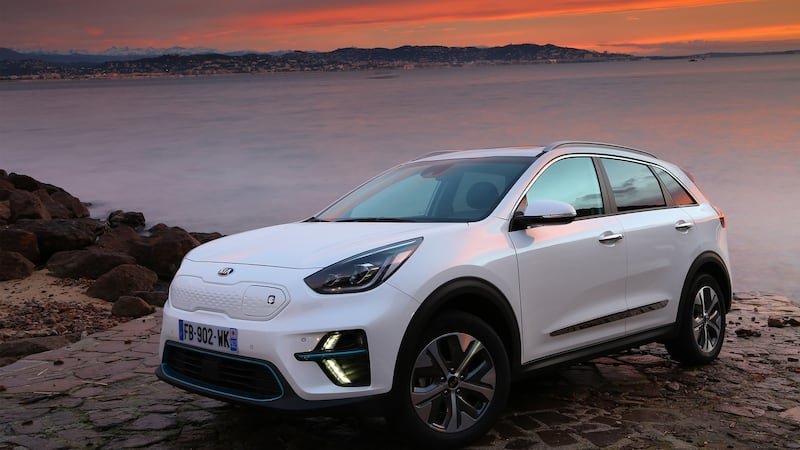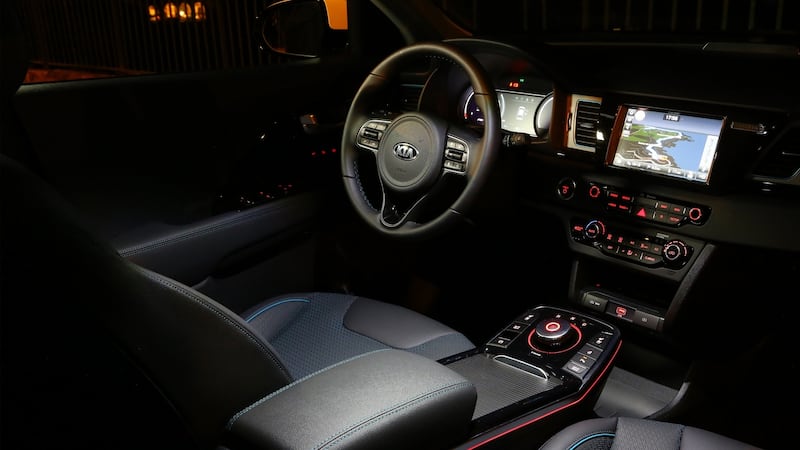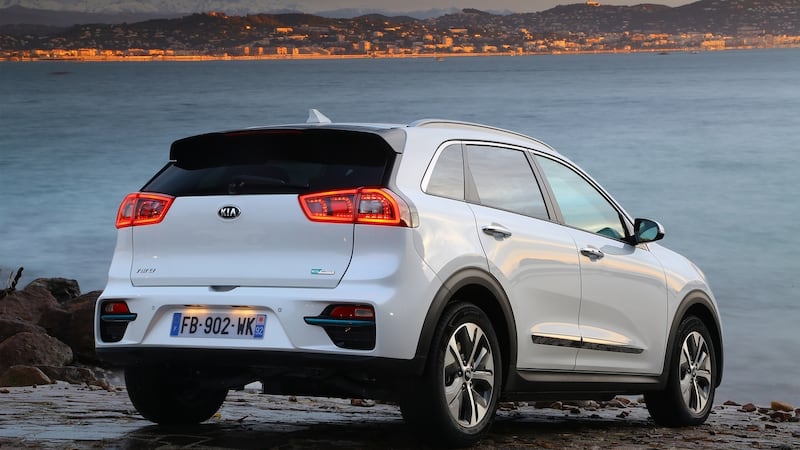Robert DeNiro may be one of the greatest actors of his generation, but he seems to have spent the past decade or so trying to ruin that reputation by starring in a succession of low-grade stinkers. Meet The Little Fockers, anyone? Or Dirty Grandpa? Or, heaven forfend, Rocky And Bullwinkle? We've come a long way from Raging Bull and The King Of Comedy, Mr DeNiro.
Still, nominative determinism can be a force for good, and for all his apparent efforts to trash his own legacy, when Bob's face appears on screen, shilling for the new Kia e-Niro (see what they did there?) his mere presence has an electrifying (sorry) effect.
To be fair, the e-Niro might not need the help. According to one senior Kia executive, Kia could currently sell every single one of its new all-electric crossovers as it can get its hands on. Now, that could be down to a burgeoning demand for long-range electric cars.
Restricted supply
Or it could be because Kia, as other car makers have been accused, is holding back production until 2020 while it cranks out a few more internal combustion-engined sales before the new Co2 limits kick in. Certainly, Kia admits that while the e-Niro will hit our market next year, supply will be tight until 2020 but that this is down to battery supply, not artificially controlling production. Read that according to your personal taste for conspiracy theories.
Range, though, has long been thought the issue. Almost every single car industry bod who could stand in front of a microphone or a notebook and pen has been saying, for a decade, that once long-range electric cars came to the market, it would be a tipping point for the industry. Well, that point has been well and truly reached. As with its closely-related sister car, the Hyundai Kona EV, the e-Niro comes with a massive 64kWh battery pack that can propel it, on a full charge, for as much as 455km without stopping.
Can it though? It seems to be able to, at this first chance to try one, although that - as ever with electric cars - comes with one or two caveats.

Here’s the raw data, though. We climbed into our 64kWh e-Niro with a full charge and 430km of range showing on the dash. We climbed out some 60-odd-km later with 381km showing, and less than one quarter of the battery’s capacity used up.
Caveats apply
Now, the caveats. The weather was mild and pleasant, so there was no need for either heating nor much in the way of air conditioning to be used. The climate control was set to 20-degrees Celsius. The route was a mixed one, but one without significant dual-carriageway nor motorway mileage. That said, while our overall speed was not that high, we did cover some very hilly routes, which shows Kia’s confidence in the real-world range of its car.
Doubtless motorway work would suck down the battery’s charge much more quickly than that, but overall, this seems like a pretty good performance and seems (seems, mind you) to indicate that the e-Niro should get you between 350-400km of range in real-world conditions on a full charge. Which is pretty good. In fact better than pretty good, that’s Jaguar I-Pace range for less than half the price.
Sadly, the e-Niro is no I-Pace to drive. In fact, it’s pretty ordinary, which is arguably fine (given the technological advancement of its powertrain) but a touch disappointing that Kia couldn’t engineer some of the tactility of, say, the new Ceed into the e-Niro’s steering and suspension.
Steering too light
That steering is far too light and rubbery for any enjoyment, or cornering accuracy for that matter, but with its silence (aside from a faintly annoying artificial hum at low speeds, there to warn pedestrians that you’re coming) and its cabin comfort, the e-Niro is a pleasant car in which to bumble along. If nothing else, it soothes your environmental conscience. It won’t sooth your back, though. Kia seems to have seriously upped the Niro’s spring rates to cope with the weight of the 400kg battery pack, so the ride quality is very, very firm even on the smooth roads of the south of France. This is likely going to be a very harshly-sprung car when it comes home to Irish tarmac…
Performance is very good, though. Even without activating Sport mode, the e-Niro’s 349Nm of torque means that it feels fleet of foot until you approach three-figure speeds. The paddles behind the steering wheel don’t change gears (there are none, just a reduction cog between the electric motor and wheels) but instead alter the level of regenerative braking. Pull and hold the left hand paddle, and it will bring the e-Niro to a gentle and complete halt, but it’s not quite as intuitive as Nissan’s e-pedal system.

On the upside, the cabin is nicely laid out, and well-made, and feels well-equipped even in its most basic form (thanks largely to things such as the all-digital instruments, and the decent eight-inch infotainment screen). It also has a very good boot - at 451-litres, it’s bigger than that of the standard Niro hybrid, and bigger than that of the Hyundai Kona EV too, so it’ll be more practical for families.
On the outside, you’ll tell it apart from the standard Niro thanks to the blanked-off grille, in which also resides the socket for the charging cable. CCS fast-charging compatibility comes as standard.
All-important pricing
Prices will be… interesting. Kia Ireland is still wrangling over both pricing, and which version of the car to order from the factory. Go low, with a price tag of around €33,000 for the low-range, smaller battery model (once you factor in the SEAI grant and VRT rebate), or go high - circa €37,000 - but have the long-range, and potentially copper-fasten the car’s longer-term residual value? There was no small amount of debate on this issue, but it looks as if things are leaning towards the bulk being long-range 64kWh models. The balancing act is complicated by the fact that Kia Europe’s figures suggest that diesel buyers switching to hybrids and electrics, in the majority (68 per cent) plump for conventional hybrid over plugin hybrid or full electric. A further complication comes in the fact that Kia Ireland has decided to stop selling the conventional Niro hybrid, in favour of the plugin version.
The problem, though, is no longer range. Here is a reasonably affordable electric car from which you can potentially get 400km on one charge, which should be more than enough for anyone. The problem now is the charging network. While, theoretically, a longer-range car means relying less on public electric car chargers, one worries that in fact it makes the problem worse - a longer range potentially pulls in more customers, but those same customers may yet baulk at the prospect of buying a car that can’t easily be ‘refuelled’ when out and about. Electric cars, as the e-Niro proves, are coming of age, but that means that the national charging network must catch up with expectations.
Perhaps Mr DeNiro, in one of his more persuasive moods, could have a word…
The lowdown: Kia e-Niro 64kWh ‘Long-Range’
Price: Circa €37,000 as tested; Niro starts at €31,495
Power: 204hp.
Torque: 395Nm.
0-100kmh: 7.8sec.
Top speed: 167km/h.
Claimed range: 455km.
CO2 emissions: 0g/km.
Motor tax: €120.
Verdict: Dull to drive, but an affordable long-haul electric solution.
Our rating: 3/5













